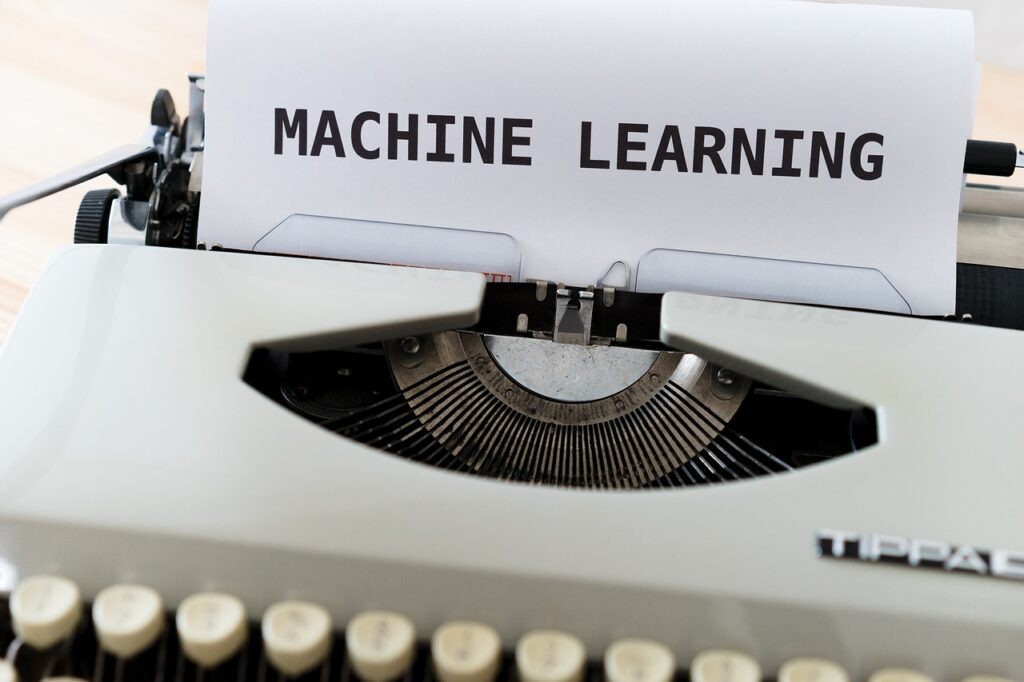As you delve into the fascinating world of digital process automation and robotic process automation, you’ll quickly realize how vital they are in achieving automation goals for businesses. “The Role of DPA and RPA in Achieving Automation Goals” gives you insight into the intricacies of these two interconnected fields. Learn how DPA refines business processes with a keen focus on automating workflows using advanced software, and how it differs from BPA. Meanwhile, RPA specializes in creating ‘bots’ that imitate and execute rule-based business tasks. Both DPA and RPA serve to optimize operations and automate routine tasks, ultimately leading to improved productivity, safety, and customer interaction. This article also addresses how organizations worldwide have come to acknowledge the crucial role of digital automation in a post-pandemic world, with trends such as hyper-automation, AI-enabled robot assistants, and business process transformation on the rise. In the end, understand how DPA excels in tasks involving data collection, activity tracking, and approvals, and how businesses are integrating this system with over 1000 third-party applications for enhanced security and process linking.
Understanding Digital Process Automation (DPA)
Digital Process Automation, popularly known as DPA, is an innovative approach aimed at using software to automate workflows and optimize digital processes and practices. Its primary goal is to facilitate the management and control of business processes, ensuring they align with broader business strategies. To fully comprehend DPA, one might have to take a dive into its evolution and why it’s integral to businesses today.
Evolution from Business Process Management (BPM) to DPA
The conception of DPA was brought about by the enduring legacy of Business Process Management (BPM). BPM was a holistic approach that involved the modelling, implementation, execution, and optimization of key business processes. With the advent of the digital era, BPM gradually evolved into DPA, strategically focusing on automating these workflows, resulting in greater efficiency, less manual intervention, and enhanced business results.
Differences between DPA and Business Process Automation (BPA)
DPA and BPA are often mistakenly used interchangeably, but they do have distinct areas of focus. While BPA concentrates on automating certain activities to accomplish a particular function, DPA takes a more comprehensive approach. DPA assumes that business processes are already digitized and focuses more on optimizing those digital workflows. It is essentially about smoothing the digital operations of a company, taking into account interaction with data, digital tools, and individual tasks.
Application of DPA in optimizing digital workflows
DPA is crucial in optimizing digital workflows in companies. It emphasizes creating systems that can manage complex processes, freeing employees from manual tasks. Instead of spending time managing repetitive tasks, employees can focus on strategic activities that add more value to your business.
Understanding Robotic Process Automation (RPA)
Robotic Process Automation (RPA) is the application of technology that allows robots or bots to mimic, learn, and execute rule-based business processes. RPA bots are capable of logging into applications, entering data, calculating and completing tasks, and then logging out.
How RPA creates robots or bots for process execution
RPA creates software bots that emulate human actions. These bots interact with digital systems and software just like a human user would. They can perform complex tasks more quickly, accurately, and tirelessly compared to human workers, which boosts operational efficiency.
Rule-based business processes and RPA
RPA thrives best in environments with rule-based business processes. With well-defined instructions, the bots perform tasks based on rules set by the business. They can read and interpret data, manipulate it, trigger responses, and communicate with other systems when necessary.
Transformation of businesses through RPA implementation
The adoption of RPA can transform businesses. It can eliminate time-consuming and error-prone manual tasks. Additionally, it can enhance the accuracy of data processing, improve regulatory compliance, and enable businesses to deliver superior services to their customers.

The Benefits of DPA
DPA carries numerous benefits that directly impact the efficiency, performance, and ultimate success of an organization.
Importance of automating routine and repetitive tasks
Automating routine and repetitive tasks is critical in today’s business environment. DPA helps in automating such tasks, freeing your employees to involve themselves in tasks that require human intervention and critical thinking. This significantly improves the overall productivity of your team.
Reduction of manual effort through DPA implementation
Implementing DPA greatly reduces the need for manual intervention in various routine tasks. This goes a long way in reducing human errors that often come with manual input. Moreover, it allows organizations to achieve large scale operations without necessarily increasing their workforce.
Impact of DPA on productivity and safety
Through automation, DPA considerably increases the productivity of an organization. It ensures that tasks are completed faster and with minimal errors, thus increasing the output. In terms of safety, DPA eliminates the need for human intervention in risky processes thereby enhancing safety.
Enhancing customer engagement with DPA
DPA plays an enormous role in improving customer engagement. With faster and efficient processes, organizations can deliver services and products faster to their customers. This not only results in satisfied customers but also contributes significantly to customer retention.
The Necessity of Digital Automation in the New Normal
Lessons from the global pandemic-vital role of digital automation
The global pandemic has been an eye-opener to many businesses. It has instilled the importance of digital automation as organizations strive to continue their operations amidst restrictions. DPA and RPA have played a vital role during this period, enabling businesses to continue with their operations remotely.
Future efficiency and the necessity of digital automation
To enhance future efficiency, adopting digital automation is no longer optional. As businesses continue to face dynamic environments, those that will leverage digital automation are likely to enjoy a competitive advantage over their counterparts who don’t.

Trends and Predictions in Digital Automation
The world of digital automation is continuously evolving with new trends emerging, shaping the future of this technology.
Hyper-automation as a future trend
Hyper-automation, an advanced automation process, is seen as a future trend. It involves applying advanced technologies like AI and machine learning to augment human capabilities.
Adoption of AI-enabled robot assistants
The integration of AI and RPA is another future trend in digital automation. AI-enabled robot assistants can learn and adapt to changing scenarios, making them more productive and versatile in handling tasks.
Transformation of existing business processes
Businesses will continuously transform their existing processes to become more streamlined and efficient. Automation strategies will play a significant role in this transformation.
Mergers and acquisitions in RPA, AI, and cloud computing areas
The consolidation of market players in RPA, AI, and cloud computing through mergers and acquisitions is likely to heighten. This is driven by a demand for comprehensive solutions that combine these technologies.
Complementing Roles of DPA and RPA in Automation
Both DPA and RPA play distinct yet complementary roles in achieving automation goals for organizations.
Distinct features of DPA and RPA
While DPA focuses on optimizing digital workflows, RPA emphasizes on automating rule-based tasks. These distinct capabilities make them both vital for comprehensive Digital Transformation.
How DPA and RPA complement each other
DPA and RPA complement each other in achieving an organization’s automation goals. While DPA provides a strategic overview of business processes, RPA focuses on executing defined tasks reliably. In combination, they ensure efficient operations that yield high-quality outcomes.
Achieving automation goals with DPA and RPA
With both DPA and RPA in their arsenal, businesses can achieve their automation goals effectively. They ensure tasks are done faster, accurately, and consistently, leading to improved performance and customer satisfaction.

Best Practices for DPA Implementation
Identifying processes conducive for DPA
One of the best practices in implementing DPA is identifying which processes are suitable for automation. Processes that are repetitive, rule-based, prone to errors, or take up a lot of time are ideal candidates for DPA.
Utilizing DPA for data collection, activity tracking, and approvals
DPA can be utilized effectively for data collection, tracking activities, and controlling approvals in the workflow. Using DPA software, all these activities can be automated resulting in faster output of tasks and decision-making processes.
Ensuring compliance and standardization with DPA
For organizations that have to comply with regulatory standards, DPA can assist in ensuring compliance. With DPA, standard operating procedures can be automated, which makes certain compliance metrics are met consistently.
Information routing via DPA
DPA can also be effectively used to route information within an organization. Through DPA, information can be automatically passed from one stage to another in a process, ensuring seamless workflow.
Application Integration with DPA
Application integration with DPA can open up new possibilities for businesses in terms of efficiency and productivity.
Integration of DPA with third-party applications
DPA can be integrated with various third party applications enhancing the automation process. This integration allows data and processes to be shared across multiple applications leading to a comprehensive, unified system of operation.
Improving security through DPA integration
Integration with DPA not only improves processes but also augments security. DPA software maintains a log of all activities carried out, making it easier to identify any malicious actions or non-compliant behavior.
Automating approvals with DPA
With the integration of DPA, approvals can be automated. Automation of approval processes eliminates delays that usually arise from manual interventions, thereby speeding up business processes.
Linking multiple processes using DPA
When integrated with other applications, DPA can link multiple processes, making it easier to manage workflows that span across several systems. Linking of processes improves coordination amongst different departments and makes sharing of data seamless.
Challenges in Implementing DPA and RPA
Despite their numerous benefits, implementing DPA and RPA is not without challenges.
Determining the right balance between DPA and RPA
One of the challenges businesses may face is determining the right balance between DPA and RPA. It requires a deep understanding of your business processes and the technical aspects of both DPA and RPA to leverage their true potential.
Overcoming resistance to change
Change is often met with resistance. Some employees may resist digital transformation out of fear of losing their job. It is important for organizations to address this fear and educate employees about the benefits of DPA and RPA.
Managing cost of implementation
While DPA and RPA can reduce operational costs in the long-term, their upfront implementation costs can be high. However, it’s important to view these costs as an investment, as the long-term benefits far outweigh the initial costs.
Addressing security and privacy concerns
Like any digital transformation, DPA and RPA come with potential security and privacy concerns. Protecting sensitive data in automated workflows is crucial. Adequate security measures must be taken, and privacy laws must be strictly adhered to.
Future Prospects of DPA and RPA
Digital automation technologies like DPA and RPA are here to stay. The future certainly holds exciting things for these.
Projection of DPA and RPA market growth
The market for DPA and RPA is projected to grow significantly in the coming years. As more businesses realize the benefits of digital automation, the demand for DPA and RPA solutions will only skyrocket.
Potential industry disruptions due to DPA and RPA
Just like any other transformative technology, DPA and RPA have the potential to disrupt various industries. Through automation, industries can redefine their operations, thereby disrupting the status quo.
Filling the skill gap for DPA and RPA
As the demand for DPA and RPA grows, there is a need to address the skill gap. There will be a rise in the demand for professionals skilled in implementing and operating these digital automation technologies. Thus, individuals and organizations alike will need to invest in skills development for DPA and RPA.
In conclusion, DPA and RPA are powerful tools that can transform businesses. They are the present and future of digital automation. By understanding them and how they can benefit your organization, you can stand ahead of the pack in this digital era.
